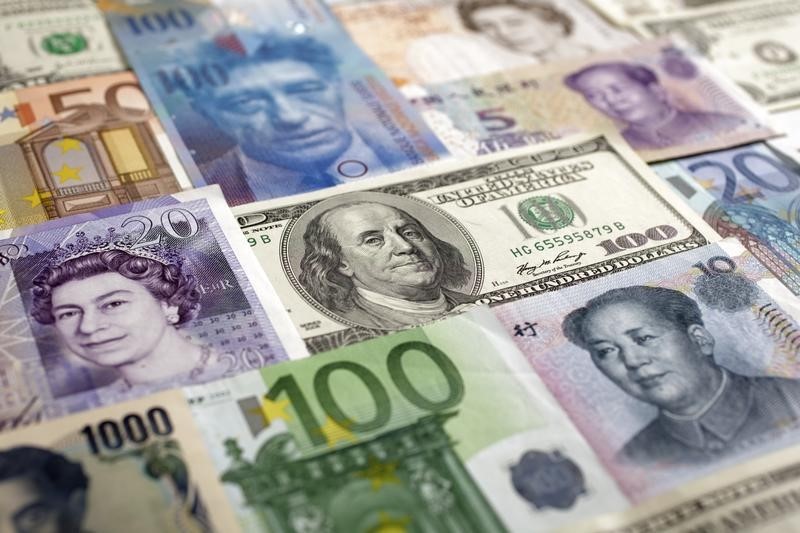* Dlr stalls as ebbing risk appetite helps safe-havens such as yen
* Dlr/yen on track for 0.4 pct weekly loss, euro/dlr 0.5 pct gain
* Aussie holds gains, takes commodity slide in stride (Adds details, quotes)
By Shinichi Saoshiro
TOKYO, Nov 13 (Reuters) - The dollar stalled on Friday, on track to post weekly losses against the euro and yen, as the market's appetite for risk receded amid a tumble in equities that pulled the greenback further away from its recent highs.
The dollar fetched 122.60 yen JPY= after capping off three straight days of losses on Thursday and was enroute for a 0.4 percent loss on the week.
It had scaled a 2-1/2-month high of 123.60 on Monday after a bullish U.S. jobs report heightened prospects of the Federal Reserve raising interest rates in December.
The dollar also sank against the Swiss franc CHF= . The dollar tends to lose ground against safe havens such as the franc and yen when investor appetite for risk weakens.
"The Fed will now have to actually hike rates for the dollar to gain further, so focus will begin drifting towards the December policy meeting and how 2-year Treasury yields move," said Koji Fukaya, president of FPG Securities in Tokyo.
The dollar has a rough positive correlation with Treasury yields, and the 2-year bill yield US2YT=RR spiked to a 6-1/2-year high late last week on rate hike expectations.
"Dollar/yen surging to 123.60 looked overdone and we are now seeing a consolidation. On the other hand, the dollar cannot drift too low due to the U.S.-Japanese yield differential theme. I don't see the currency falling much below 122.00 yen," Fukaya said.
SLIDING STOCKS
Wall Street saw its worst session in more than a month on Thursday on lower commodity prices and comments by New York Fed President William Dudley who gave the latest round of hints about an approaching rate hike. .N
Tokyo's Nikkei .N225 followed suit, losing 1 percent on Friday.
"Prospects of a December rate hike were initially supportive for the dollar, as seen in the rally early this week, as it also entailed a surge in risk assets," said Junichi Ishikawa, market analyst at IG Securities in Tokyo.
"But the dollar is beginning to flag as risk assets are beginning to show negative reactions to the potential for higher rates."
The euro, which was hit earlier on Thursday by dovish-sounding comments from European Central Bank President Mario Draghi, benefited from the broad dollar weakness.
The euro traded at $1.0796 EUR= after rebounding sharply from a low of $1.0691 stooped on comments by Draghi, who singled out the currency's more robust performance since May as one driver for a "weakening" outlook on inflation.
The common currency was poised to gain 0.5 percent on the week thanks to its rally overnight although it had sunk to a 6-1/2-month trough of $1.0674 on Tuesday.
The Australian dollar remained on the front foot with momentum from Thursday's much stronger-than-expected local jobs report buffering the slide in commodities.
The Aussie nudged up 0.1 percent to $0.7134 AUD=D4 after rallying more than 1 percent on Thursday as the upbeat employment data reduced the odds of a near-term rate cut by the Reserve Bank of Australia.
Other commodity currencies such as the Canadian dollar did not fare so well amid declining crude oil prices.
The loonie touched a 6-week low of C$1.3342 CAD=D4 to the greenback on Thursday and was last little changed at C$1.3289.
Soft bank lending, trade, inflation and industrial output numbers from China this week have fanned global growth concerns and weakened commodities, sending Brent crude LCOc1 to late-August lows.
